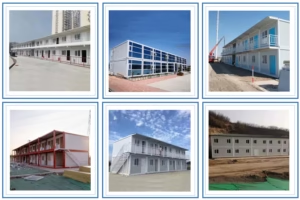A modern and eco-friendly solution is found in a Container House, and like any construction, proper insulation is needed to guarantee comfort throughout different climates. Without insulation, the metal structures can be too chilly during winter and too hot during summer. This guide will discuss the most suitable techniques which help with temperature stabilization, energy efficiency improvement, and living condition advancement.
1. Spray Foam Insulation: Maximum Coverage & Efficiency
Spray foam is one of the most effective insulation methods for a Container House. It expands to fill gaps, preventing heat transfer and reducing condensation inside the metal walls. It also adds structural strength and provides a moisture-resistant barrier.
For a deeper look into why spray foam insulation works best for Container Houses, visit our website.
2. Rigid Foam Board: Affordable & Durable
Rigid foam board insulation is another excellent choice, providing high thermal resistance while being lightweight and easy to install. It is ideal for floors, walls, and ceilings, offering an effective barrier against temperature fluctuations.
Explore more cost-effective insulation techniques to enhance your Container House.
3. Blanket Insulation: Budget-Friendly & Easy to Install
Fiberglass blanket insulation is widely used for its affordability and ease of installation. While it may not provide as tight of a seal as spray foam, it still offers excellent thermal protection when installed with a vapor barrier to prevent moisture buildup.
For additional insulation solutions, check out this guide to home insulation.
4. Eco-Friendly Insulation: Sustainable & Efficient
When it comes to insulation for Container Houses, using natural materials such as wool, cotton, or cork is a great alternative. These materials help in thermally resisting and have less environmental impact.
Learn more about eco-friendly materials for sustainable Container House insulation.

5. Interior vs. Exterior Insulation: Choosing the Right Approach
- As for insulation placed on the inner portion of the walls, it is easier to install but also presents a problem as it consumes some interior floor space.
- On the other hand, exterior wall insulation helps reduce heat loss and control the temperature but it does require additional weatherproofing.
For a comparison of insulation placement methods, check out our in-depth guide.
Final Thoughts: Staying Comfortable In Your Container House
To ensure that you maintain an optimal indoor climate in a Container House, it is crucial to equip the unit with proper insulation such as spray foam, rigid board or eco-friendly materials. Each of these options offer an effective way to insulate the unit and maximize energy efficiency as well as overall livability.
Looking for the best insulation solutions for your Container House? Visit our website for expert insights and tailored recommendations!



